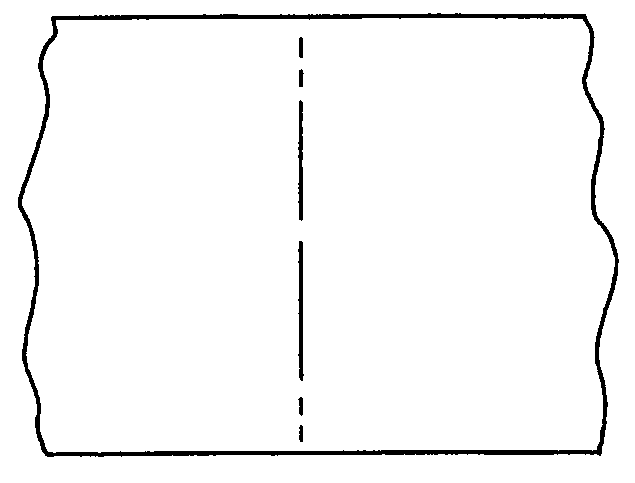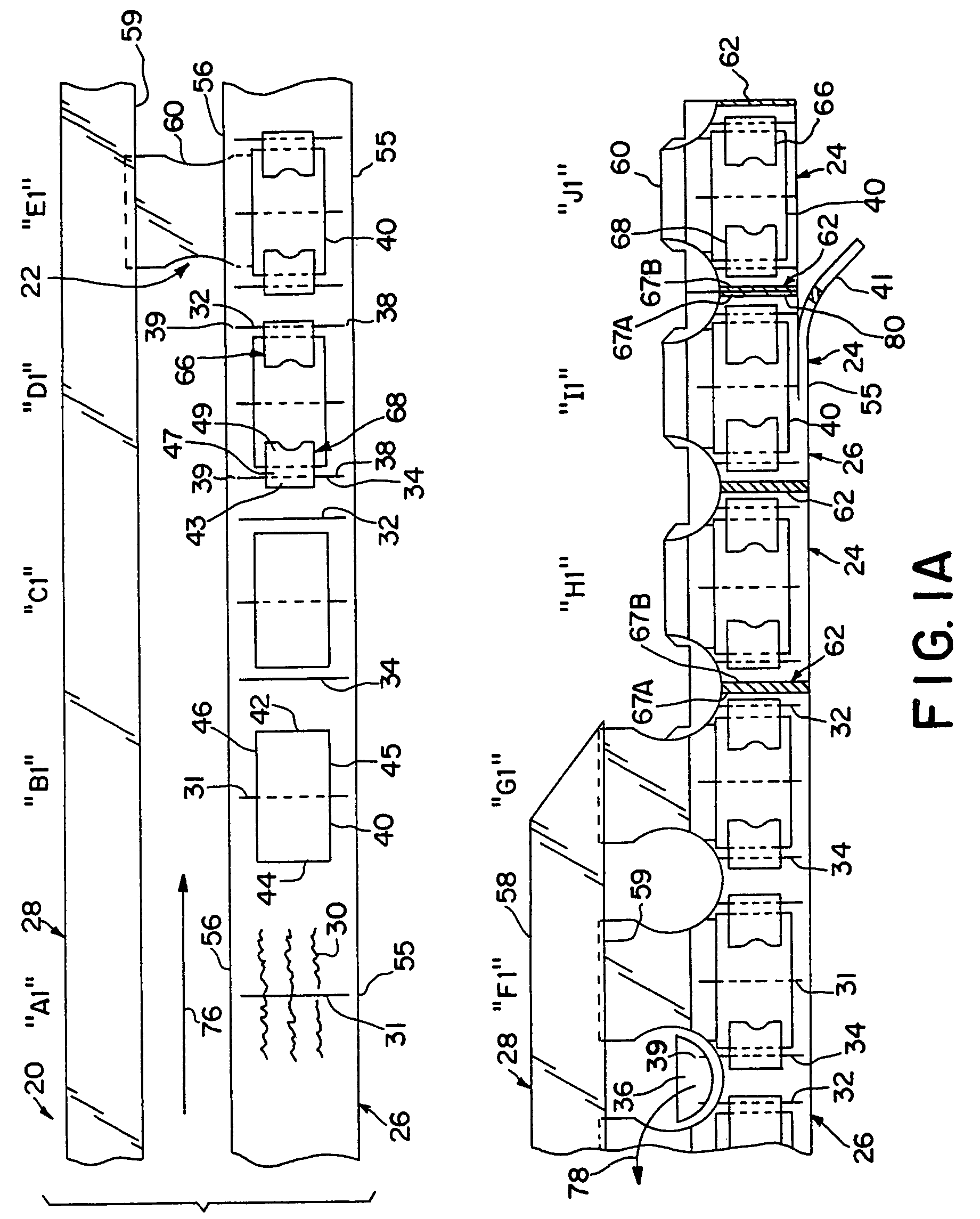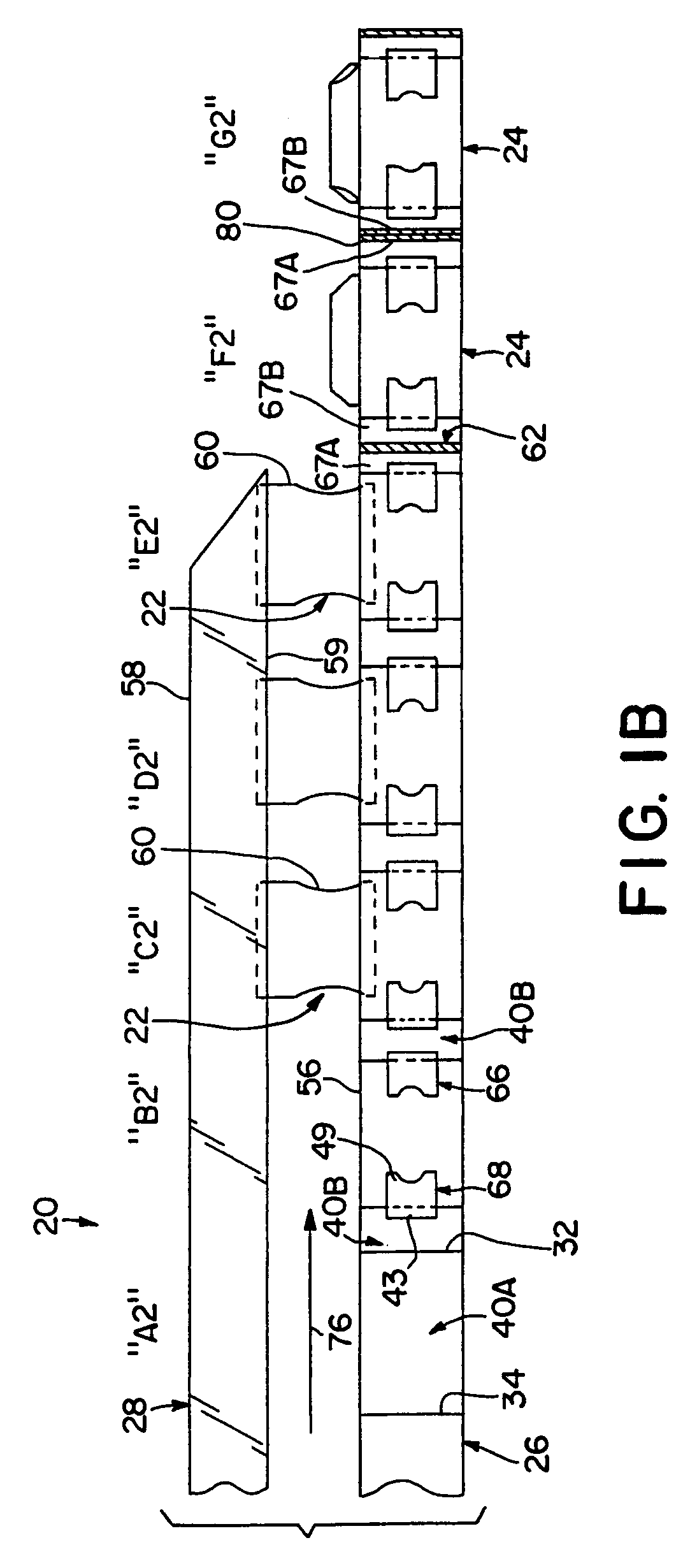Method of assembling personal care absorbent article
a technology of absorbent articles and assemblers, applied in the direction of layered products, chemistry apparatus and processes, bandages, etc., can solve the problems of significant material waste attributable to such inefficient conventional manufacturing processes
- Summary
- Abstract
- Description
- Claims
- Application Information
AI Technical Summary
Benefits of technology
Problems solved by technology
Method used
Image
Examples
Embodiment Construction
[0043]Referring to FIG. 1A, the invention comprehends apparatus and methods for assembling personal care absorbent articles. Respective segments of the exemplary illustrated manufacturing process of the invention are indicated by letters “A1-J1”.
[0044]At the segment of the method illustrated at “A1”, a stream of workpieces 20 travels along a manufacturing path in the machine direction indicated by directional arrow 76. In the embodiment illustrated in FIG. 1A, stream of workpieces 20 is defined in the combination of front portion web 26 and rear portion web 28, as well as any other personal care article components employed or affixed, both directly and indirectly, to such webs. At segment “A1” of the process illustrated in FIG. 1A, strands of elastic 30 are disposed on and / or in front portion web 26. While FIG. 1A shows elastic strands 30 only at a central portion of the workpiece in segment “A1”, it should be understood that such elastic strands are typically spaced along the full ...
PUM
| Property | Measurement | Unit |
|---|---|---|
| density | aaaaa | aaaaa |
| weight percent | aaaaa | aaaaa |
| thicknesses | aaaaa | aaaaa |
Abstract
Description
Claims
Application Information
 Login to View More
Login to View More - R&D
- Intellectual Property
- Life Sciences
- Materials
- Tech Scout
- Unparalleled Data Quality
- Higher Quality Content
- 60% Fewer Hallucinations
Browse by: Latest US Patents, China's latest patents, Technical Efficacy Thesaurus, Application Domain, Technology Topic, Popular Technical Reports.
© 2025 PatSnap. All rights reserved.Legal|Privacy policy|Modern Slavery Act Transparency Statement|Sitemap|About US| Contact US: help@patsnap.com



